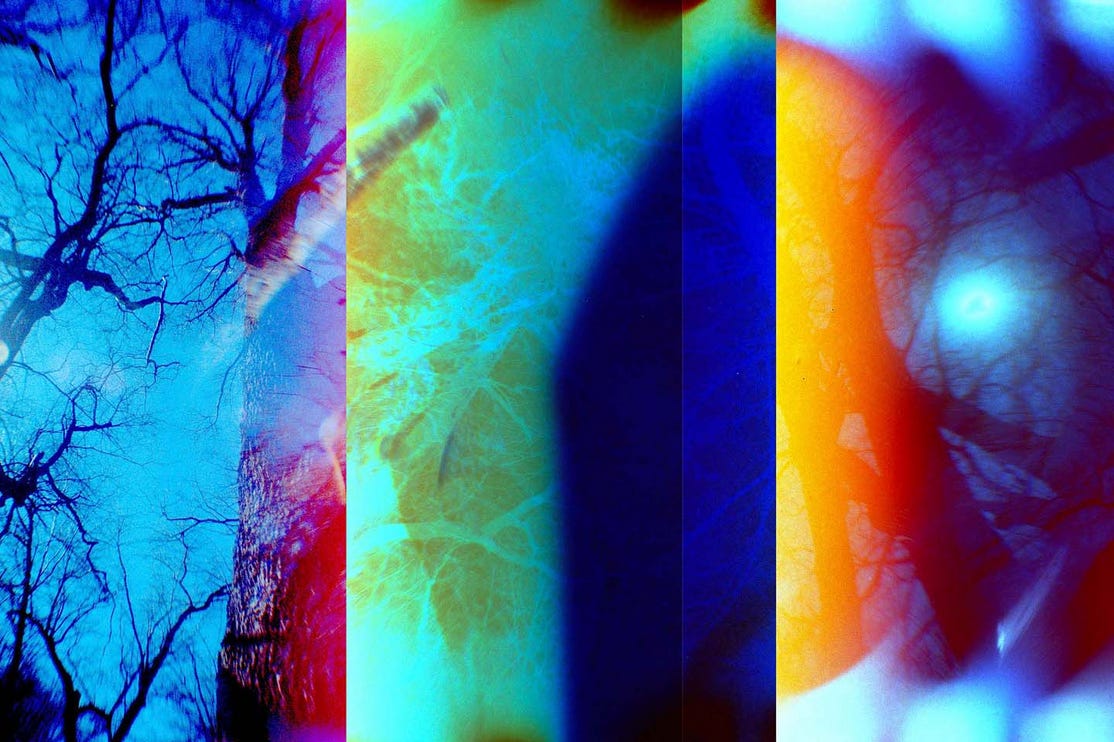
Photography has long been considered mainly as expression in the service of a language of the eye. Yet certain practitioners of the form have achieved impressive disciplines that diverge from this assumption. They have taught us that the act of looking changes the object of attention, and that by also changing the rules and by consequence the expectations, of that act, they can also redefine the role that photography can fulfill. They give us more than an eyeful; they alter time itself.
Leah Oates is just such a photographer. Her vision is by turns darkly psychological, instinctually immediate, and reflectively transcendent. Her photographs dating back through 2021 are especially moving. Oates has over time expressed a single concept, of the impermanence of her subject despite every effort to have it formally bestilled. Despite the popularity and abundance of means of creating digital images, Oates’ works are achieved via traditional analog means as creative interpretations and experimentation with the physical material of film itself. This allows her to maintain both a technical skill and creative authority that rest on their own laurels.

The photographer’s metier is to stop time. To alter our perception of the passage of time. To freeze our attention with images that are so potent, so transformative, that they introduce a new experience into the universe of things known. Leah Oates’ work, especially her work since 2021, achieves this with both authority and aplomb. There’s nothing stylistic to her vision, though it does rely upon chance entanglements of multiply-exposed images within the same roll of film. She also allows extra light to enter the camera at the moment of depressing the shutter, to give her images both a transitive, kaleidoscopic quality and to allow the film itself, in a state of vulnerable exposure beyond its standard use, to create areas of solid or disintegrating color. These are employed as boundaries or territories that break up cognitive reception of narrative comprehension within separate and consecutive images. Of course, Oates is no cold technician, she has an emotional response to the environments she depicts. She mainly uses the color bands as a sculptural means to delineate increments of time similar to the shutter click on a camera, and how the viewer perceives this in a visually sculptural manner. Yet in thinking about these interruptions in a meaningful manner beyond mere technical virtuosity, Oates now sees them as points along a timeline of climate crisis, with alternating views between a landscape that is safe and healthy and a landscape that is disintegrating and dissolving. If this perspective lessens the aesthetic impact of the work, so be it. If art can’t serve many masters it has less right to court complexity.

Luckily, the image in Oates’ care is never just an image. It owes a debt to a vision that’s always in motion, like nature itself, and the evolution of human consciousness. Likewise, it’s impossible to view multiple images from Leah Oates’ continuing oeuvre without being personally transformed. As chance dictates the range of possible effects within her work, so will chance allow us to enter it where we are most able, and to travel instinctually from one image to the next, creating an imaginary narrative patched together from random moments of sensory overload. These photographs place us at the threshold between reason and imagination. where an instinct for the transitory is both a requirement and a pleasure.




